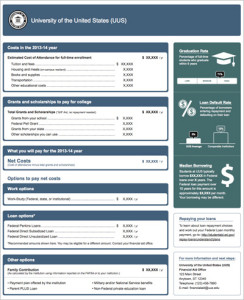 Is your child’s financial aid offer enough to meet their financial needs? If not, they may be a victim of “gapping” or “admit/deny”, when a school accepts a student, but does not give a student enough aid to realistically attend.
Is your child’s financial aid offer enough to meet their financial needs? If not, they may be a victim of “gapping” or “admit/deny”, when a school accepts a student, but does not give a student enough aid to realistically attend.
Is Your Financial Aid Offer Meeting Your Full Need?
Your child has finally received the financial aid offer from their dream school. You are excited for the great experience they could have at this school, but after taking some time to decipher the offer you realize that the money the school is offering has not completely met your need. You are stunned when you calculate the total amount you will owe after factoring in grants and scholarships from the college.
The practice of accepting a student and then not offering them enough financial aid to afford the college is known as “gapping”, or “admit/deny”.
This practice is shockingly common. According to The 2014 Survey of College and University Admissions Directors, over half of college admissions directors practice gapping at their institutions, although it is much more common in private schools. 72% of private college directors and 39% of public college directors say that they use this practice. The majority of private college directors, and about a third of public school directors say the practice both is necessary and ethical.
This is an issue for both need-blind and need-aware colleges. In theory a need-blind college cannot deny a student based on their ability to pay. In practice, however, these colleges know they will receive a greater benefit by accepting more students who have the ability to pay the bulk of their tuition. Instead of rejecting these low-income students outright, they admit them without offering the financial aid they need, which is in effect, a denial.
How to Fill Financial Aid Gap
Families often have a hard time deciphering financial aid offers, and it may not be immediately clear to them that their full financial need has not been met. Unfortunately, many of these students end up taking out massive loans in order to attend a school that is only meeting 75%, 50% or less of that family’s need.
What they should do instead is learn how to interpret financial aid offers, and compare offers between colleges to see who is offering the better deal. To find the true cost of attending a college, you must know your expected family contribution and subtract that number from the total cost of attending (total cost includes tuition, fees, room, board and living expenses). Unsubsidized loans and Parent Plus loans are available to anyone regardless of need and should not be considered part of your need-based aid.
Colleges also report how much aid they give out, so you can look up a chosen university to see the average aid they award, as well as how many students receive financial assistance. For example, Stanford is more likely to be a pricey school as they only give aid to about 55% of their students.
Gapping is more likely to happen at private schools, and schools that are a reach for the student. There are some schools that are committed to meeting the full need of the students who apply, though these schools may be more difficult to get into, and are often need sensitive or need aware.
The best defense against gapping is to ensure that the student has applied to colleges that are a good fit for them. If a student is attractive to a college, they will be willing to entice the student with a greater share of financial aid dollars.
_____________________
About the author: Carly Stockwell is the media director at CollegeFactual.Com, a website that helps students make better decisions about where to go to college.



 In London, you see signs and tourist shirts everywhere that say “Mind the Gap”. If you ride their underground transportation system, you will hear them announce “mind the gap” at each station. It’s a warning for passengers to be aware of the distance between the train and the train platform.
In London, you see signs and tourist shirts everywhere that say “Mind the Gap”. If you ride their underground transportation system, you will hear them announce “mind the gap” at each station. It’s a warning for passengers to be aware of the distance between the train and the train platform.